Sapa, a district of North West Vietnam, 350km far from Hanoi capital, is famous for terraced fields at the foot of magnificent Fansipan mountain. Terraced fields in Sa Pa was honored as one of the most magnificent terraced fields in the world. They have existed for hundreds of years, were created by many generations of ethnic minority groups like the Ha Nhi, H’Mong and Dao. There are terraced fields with hundreds of hectare in Ta Van, Lao Chai, Ban Den, Trung Chai, Ta Phin… In agriculture, a terrace is a piece of sloped plane that has been cut into a series of successively receding flat surfaces or platforms, which resemble steps, for the purposes of more effective farming . This type of landscaping, therefore, is called terracing. Graduated terrace steps are commonly used to farm on hilly or mountainous terrain. Terraced fields decrease both erosion and surface runoff, and may be used to support growing crops that require irrigation, such as rice. Due to the steep feature, fertile soil thanks to it was created by weathered granite rock and mountain cliffs often stock water, local ethnic minority people can grow, rice harvested and establish terraced rice fields, one after another, from the foot to nearly top of mountains.
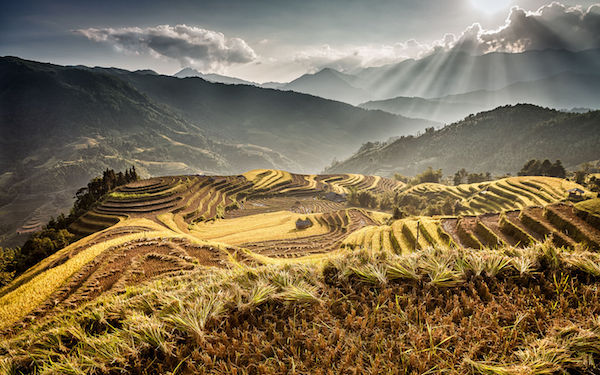
The scenery of the Sa Pa region in large part reflects the relationship between the minority people and nature, which can be seen perceptibly in the paddy fields carpeting the rolling lower slopes of the Hoang Lien Mountains, especially in harvesting season. It was the elements wearing away the underlying rock over thousands of years that created this impressive physical landscape. With the temperature ranging from the lowest of -1 degree Celsius to the highest of 29 degree Celsius, Sapa’s climate is moderate and drizzly in summer while chill and foggy in winter. That is why area has only one rice season in a year. As usual, in April and May when the local people water their fields at full to prepare for a new crop, the surface of terraced fields shines like a mirror reflecting the contrast of the reddish brown of soil, the deep blue of the sky high above and the green of surrounding forests. Embankments surrounding these terraces look like threads softly lined by the painter. In June and July, the terraced rice fields with fully-grown paddy rice and forest trees spread the green out to the entire area, from the foot to top of mountains, before disappearing in mist. The green of paddy rice grown on the terraced field makes tourists think of it as a hand-made creation of uniqueness which cannot be found anywhere else. About 1 – 2 weeks in the between of September and October, Sapa is in harvesting season. At that time, rice is ripe, getting yellow in autumn sunshine and begin to drop.
Nature is not only given to the people of this land landscape and ideal climate, but also gives them the skillful hands. Reaping or cutting is the first operation in harvesting. The rice crop is cut by using simple hand tools like sickle or hand-held knives. A mountainous sickle is shorter than the one of plain and less curved. It is a bit longer and more curved than a small knife.
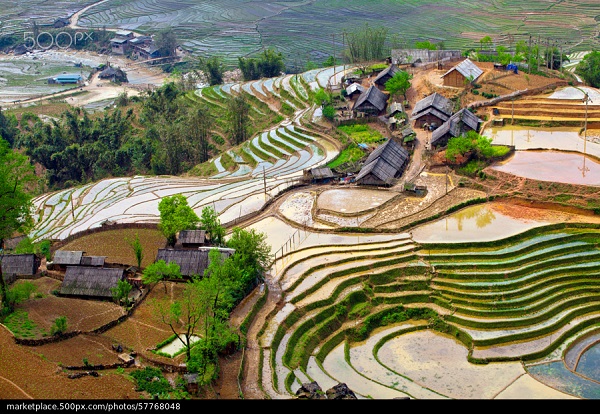 During the time, the terraced rice fields look like golden silk scarves flying over in the wind above green mountain slopes, or like the golden ladder to the sky, making the mountainous landscape astonishingly beautiful. It is one of the best experience in Vietnam highlights tour. It is credible if the tourists feel lost in another world.
During the time, the terraced rice fields look like golden silk scarves flying over in the wind above green mountain slopes, or like the golden ladder to the sky, making the mountainous landscape astonishingly beautiful. It is one of the best experience in Vietnam highlights tour. It is credible if the tourists feel lost in another world.
After cutting, farmers use bamboo screens or wooden platform to threshing. It is the process of separating the grain from the straw. They flail manually on fields as the custom of the traditional agriculture. That performance is a beauty of labor which inspire in Sapa’s landscape – Muong Hoa valley. The metamorphosed sediments strike from north-west to south-east along this valley. On the north-eastern side of the valley is a craggy ridge of marble and metamorphosed carbonate rocks that exhibit a karst style of weathering. These formations are currently being quarried for road building. The valley floor is characterized by schist and, to a lesser extent, gneiss. The granitic intrusion extends from the Muong Hoa River to the summit ridge of Fansipan and beyond. Due to the high humidity and rainfall in the area, chemical weathering is prevalent. This is reflected in the clay nature of the soil.
Then, after being sifted in order to remove unwanted materials from the grain, rice will be bagged and transported. In each of mountainous family, everyone is at work for harvesting, included children with proper works. Families team up to ensure that each family’s yield is collected in the two or three days to be finished. There is usually a big celebration marking each family’s completion. The families who complete harvesting will continue to work by starting the same process in a neighbor’s nearby plot as the traditional neighborhood in Vietnam.

Rice fields on terraced of Mu Cang Chai, YenBai, Vietnam. Rice fields prepare the harvest at Northwest Vietnam.Vietnam landscapes.
The experience of harvesting season in Sapa will be more likely if you can do it by yourself. In the beginning, you will feel tired and unfamiliar with these works. But just for a while, you will be filled with the interest in new skills that you would have learnt, the satisfactoriness after finishing the job, and the emotion when you understand the meaning and value of labor. Try working as a farmer with the hospitable mountainous people and comfortable fresh atmosphere in there will help you love the life and labor more and more. That is the beauty of labor which Sapa’s rice season brings to you.
After harvesting, farmers burn rice stubble on terraced fields making a special beauty for Sapa. Smoke and fog (every year, Sapa has 160 days with fog climate) draw a natural picture among mountain and forests, a fanciful scenery. All view is so grandiose and amazing. You will be overwhelmed by the beauty of this season in this area. See Sapa, see harvesting season, you will understand why tourists spend a mature love on it.



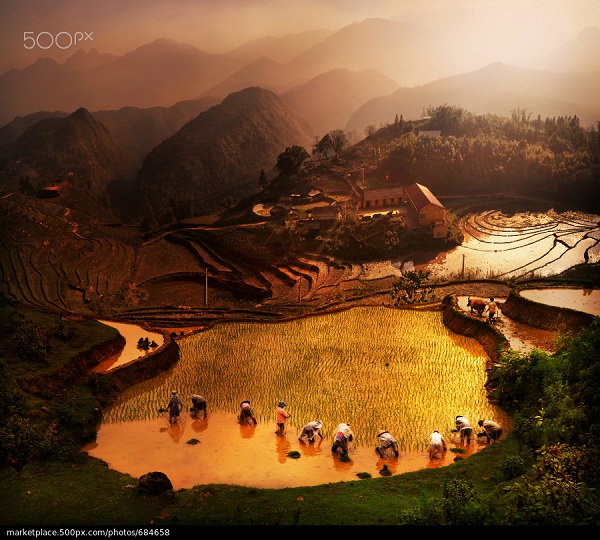
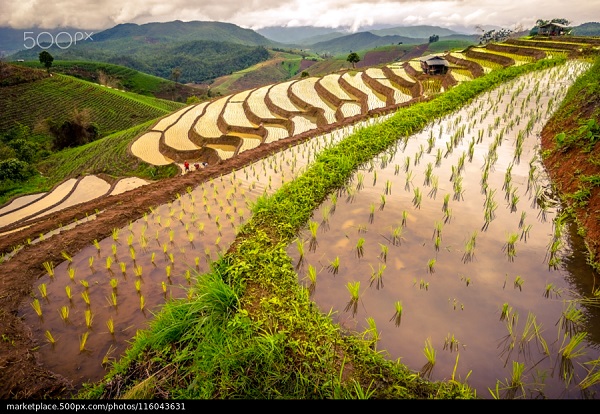
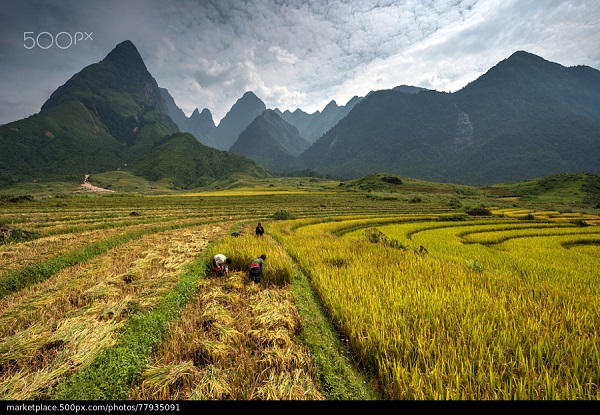
Comments